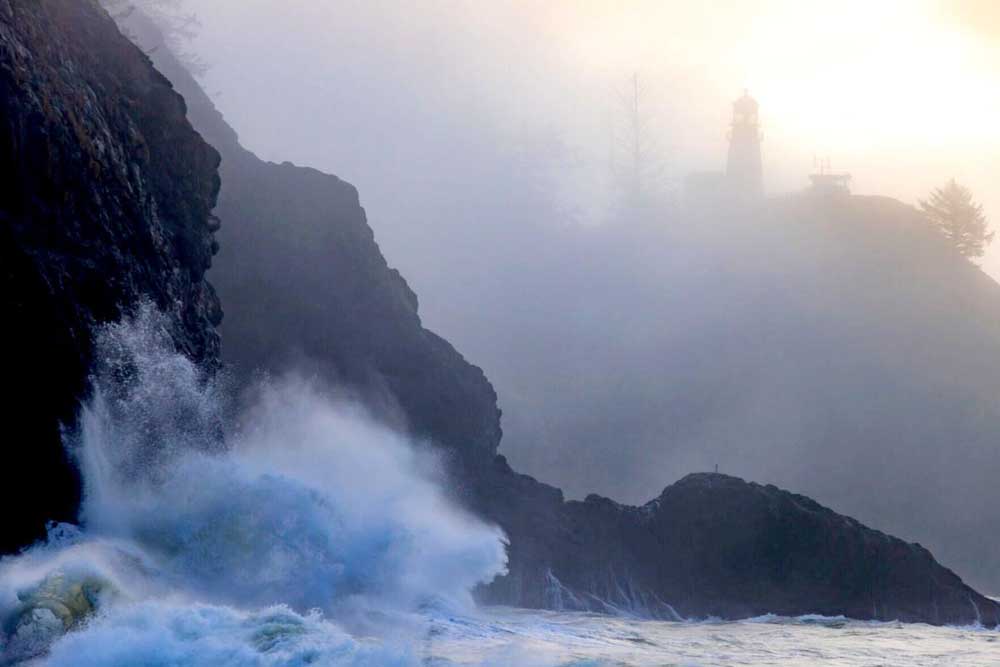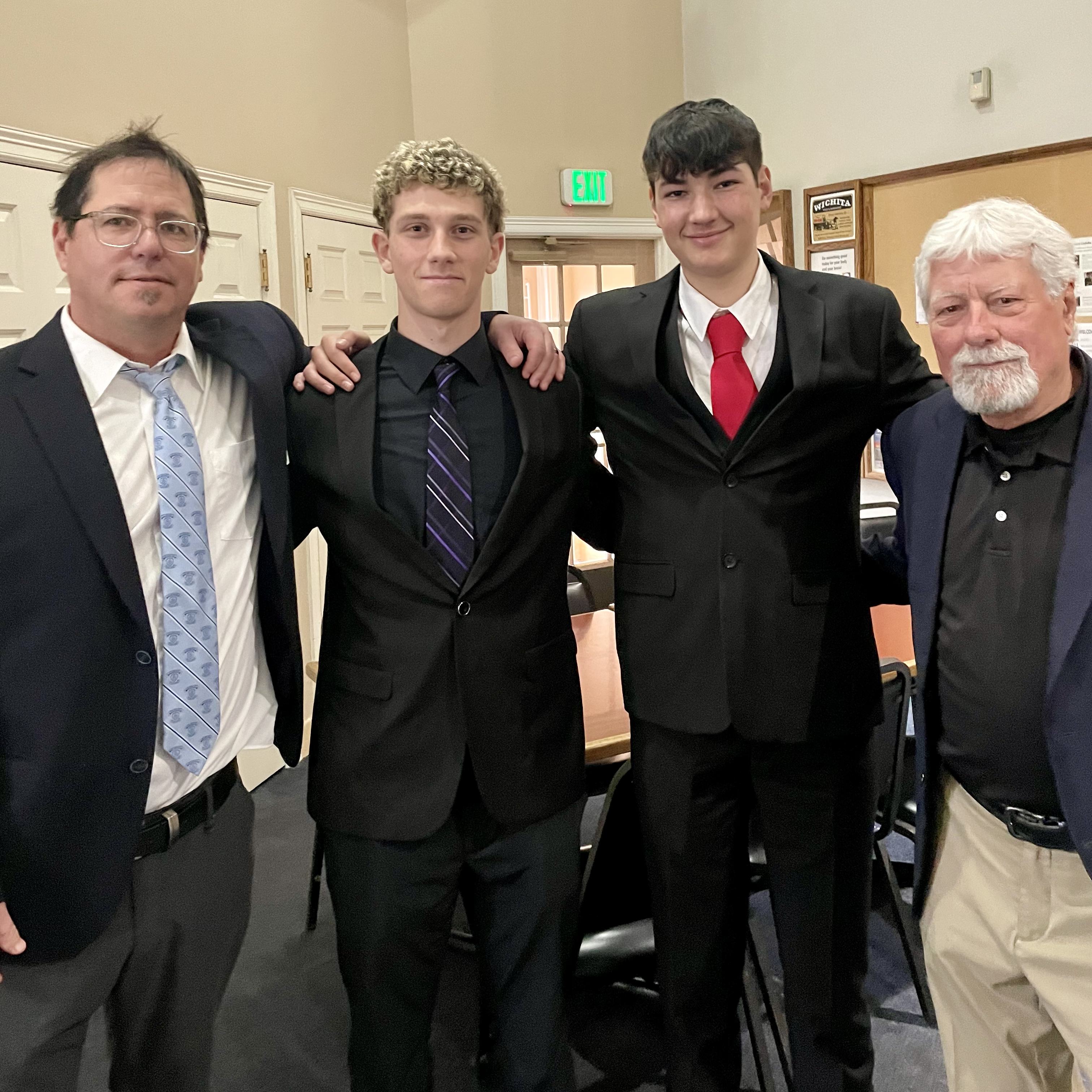Writer’s Notebook: History shapes our perspective
Published 12:30 am Saturday, April 11, 2020

- Steve Forrester
History is all about perspective. Each new layer of events give meaning to those that preceded them. As we deal with the radical change in our lives that the coronavirus has brought, it is useful to look backward.
Trending
With that in mind, we convened a discussion with two local historians. McAndrew Burns is the executive director of the Clatsop County Historical Society. John Goodenberger is an architectural historian and author of a forthcoming book about the Flavel family.
Q: This pandemic is changing the course of history. It is not the first time that a national, international or local calamity has affected an entire population. Looking at our history, the 1922 Astoria fire comes to mind.
Goodenberger: You may remember a large ad in the newspaper following the fire, saying: ‘Hey everybody, we need to forget about our differences — racial, economic or political. Stop arguing. We have to get out of this.’
Trending
The mayor appointed the Committee of 10 to guide us out. And, they did. But there is more to the story. While it’s Astoria’s DNA that we’re supposed to be rough and tumble and independent, there were a lot of Portlanders who helped us get out. We had Portland people investing in the town. Many of the new buildings were built by outsiders.
The majority of the buildings were built over a three to five year period. And then the Great Depression happens and we get set back again. We really did suffer in that period.
Burns: That sense of optimism — that we’ll bounce back from this — was so apparent. In addition, the geography of the town is altered forever by the fire with the fill that is brought in. ‘If it’s flat — it’s fill.’
Q: What are other examples of physical events that overwhelmed this town and region?
Burns: Colleagues reminded me about the 1700 earthquake on the subduction zone. We know when it occurred down to the exact time. That’s one we don’t know much about how it impacted locals, because Native Americans didn’t keep written records. It was an oral tradition.
Q: Then we had the disappearance of the Chinook Nation, which had been here for 1,000 years.
Burns: By 1830, the local (native) population had been wiped out to the tune of 90% of the population killed. Historical accounts talk about smallpox, malaria, measles.
Between the 1780s and 1830, a civilization practically vanishes. It is extraordinary that the local tribes still exist after what they went through.
Goodenberger: It is also a mistake to say they are completely gone. They intermarried, and they have descendants.
Q: What do we know about how the Spanish flu pandemic of 1918 affected the Columbia-Pacific region?
Burns: I like to look at the similarities to today. On Sept 27, 1918, in the newspaper we read that there’s nothing here; we’re OK. At the end of September, they transfer about 1,600 soldiers from Camp Lewis in Washington to Fort Stevens. On Oct. 2, 1918, the paper reports that Fort Stevens is under quarantine. The commander claims there is no Spanish flu. They’ve got really bad colds and are confined to the hospital.
The newspaper carries this headline: ‘The Spanish Flu is nothing more than old fashioned Grippe – and no more dangerous.’
Then 12 soldiers die. The Astoria Evening Budget says that while a number of soldiers are sick, the epidemic seems to be subsiding. On Oct. 12, Astoria is closed by the mayor. At mid-October, there are 1,500 cases in Astoria.
There’s a month and a half, and it comes back again.
Q: World War II, of course, transformed the mouth of the river, with the U.S. Navy arriving. And the Navy’s departure following the war’s end was devastating to the economy.
Burns: That may have been the only time downtown was full — during the war. We’d been a military area for quite some time — with three forts. With the Navy’s arrival, greater Astoria goes from a population of 10,000 to 20,000.
Goodenberger: There was also the fear after the shelling near Fort Stevens by a Japanese submarine. The war comes that close to Astoria. It was suddenly very real if it had not been before. Then there were the day-to-day sacrifices people made in rationing and curfews and limited access to things like the beach.
Burns: (Lifelong resident) Denny Holmes had a house on the beach and has strong memories of MPs walking up and down the beach.
Goodenberger: When the train went past Tongue Point, a military base, you had to draw the curtain.
Q: John, in your research of Capt. George Flavel, have you come across family correspondence that reveals this phenomenon — of a national crisis?
Goodenberger: So there are letters from the women of the family — they are the best letter-writers, and Nellie is my favorite. They are hanging out in San Francisco in 1898, as soldiers are being sent off to the Spanish-American War. The military is not taking care of their soldiers. They are camping in the fields near the Presidio, some of them don’t have tents, and it’s raining. They are getting sick.
Nellie stood in the street and watched them march out to get on the transport ship. She wrote: ‘All of the soldiers here are so very young and they certainly do not realize what they are going to. So many will die from the climate at the Philippines if they are not killed in battle.’
In early 1893 to the spring, the captain was confined to his house for 20 weeks, bedridden, until he can go to San Francisco for gallstone surgery.
He has real estate, agriculture, a bank.
His secretary, Samuel S. Gordon, writes to the captain, who is in San Francisco: ‘I sent you a bank statement on June 1. You will see deposits are way down, but that is no fault of ours, but due to the extreme scarcity of money. I hardly expect deposits to go much lower as the gillnet fishermen are doing well and must soon put money in circulation.’
During this period, several financial reversals are happening. The stock market crash comes, May — August 1893. The captain dies in July of 1893, in the middle of this.
Q: In your research of prior public health calamities, what else have you found?
Burns: I pulled some smallpox stories from the paper. One involved the 1881 quarantine of the American barkentine, Alden Bessie.
In 1906, the city pest house is occupied by an imported smallpox patient.
In 1929, schools are closed because of smallpox.
Goodenberger: I have in 1903 that schools, churches and businesses were closed in Astoria because of scarlet fever. Uppertown seemed to be the hardest hit. If you had scarlet fever, and your house was quarantined, they had a special police officer stand in front of your house to prevent anyone from coming or going.
Crises like what is happening today are reoccurring through history. I would like to get rid of using the word ‘unprecedented.’ We’ve been through similar things before. This one right now may be unique. But there are similar things in our history.
Burns: We’ve shown that we know how to shut the community down, starting with Spanish flu.
But it’s our short-term history and our lack of knowledge of history that shapes our current perspective. Because it’s happening ‘to me,’ and affecting us, it becomes unprecedented.









